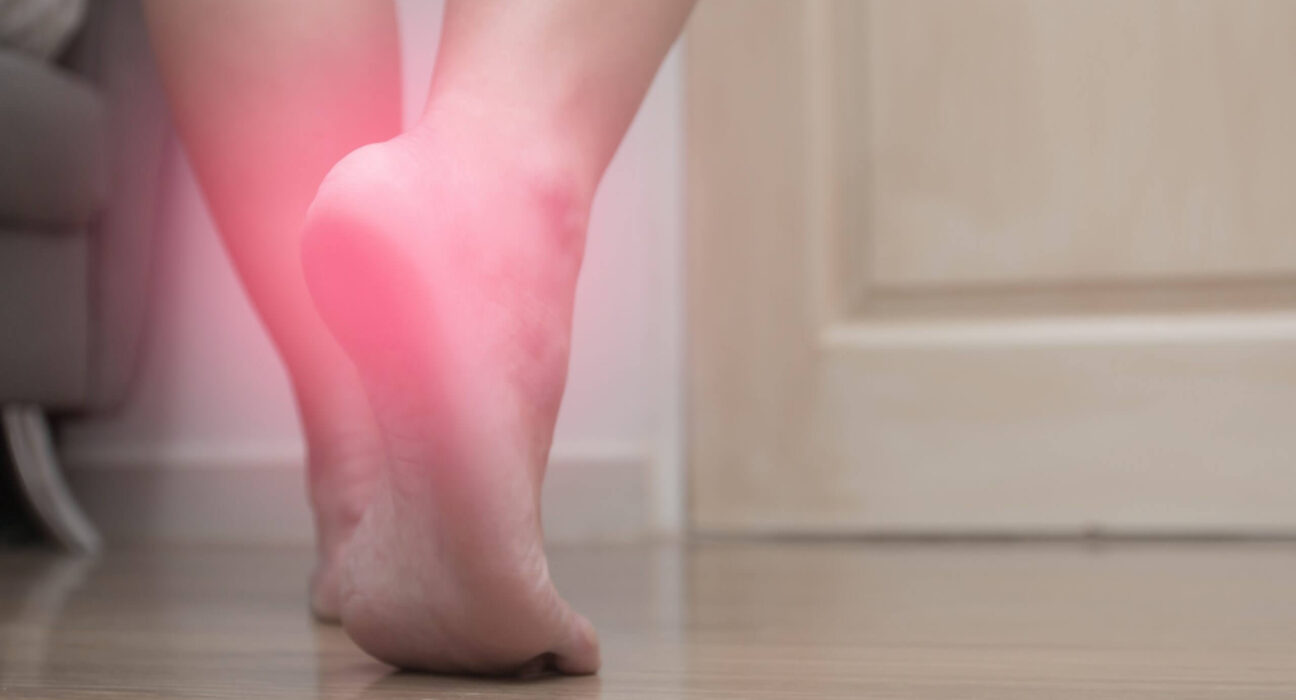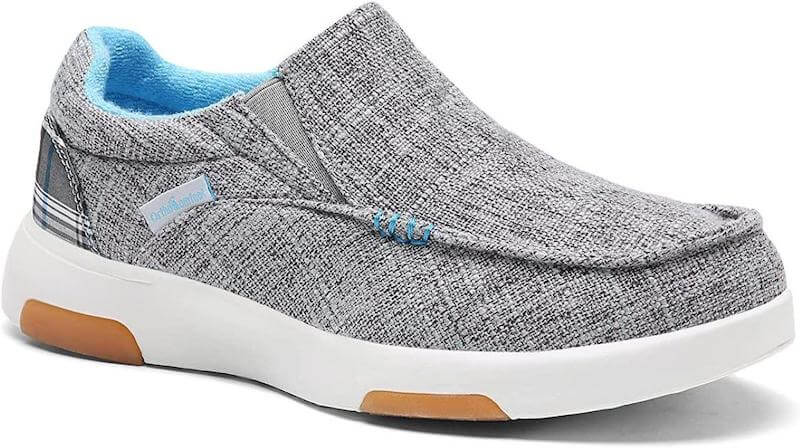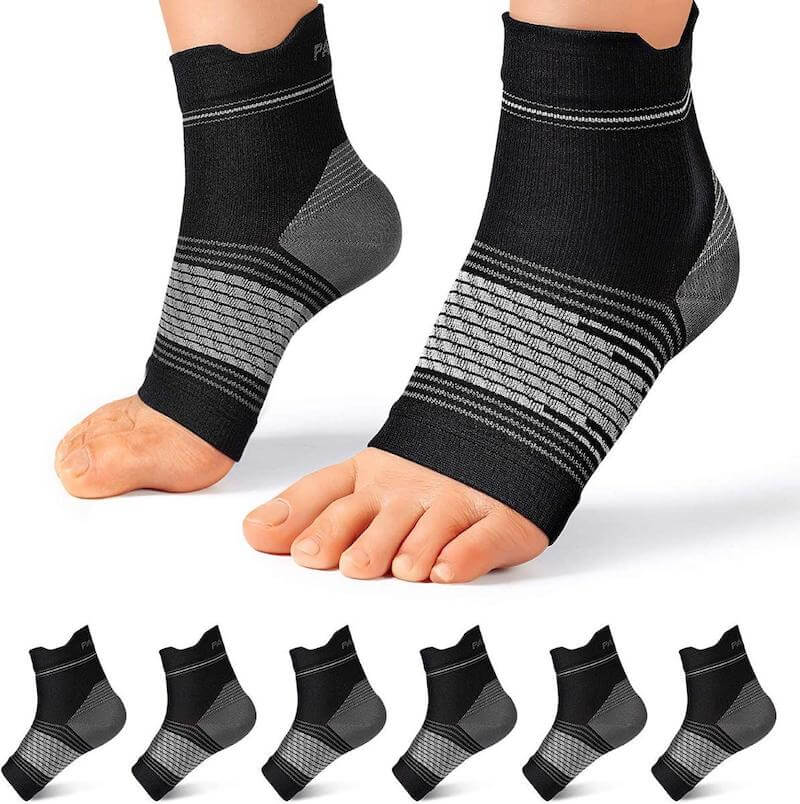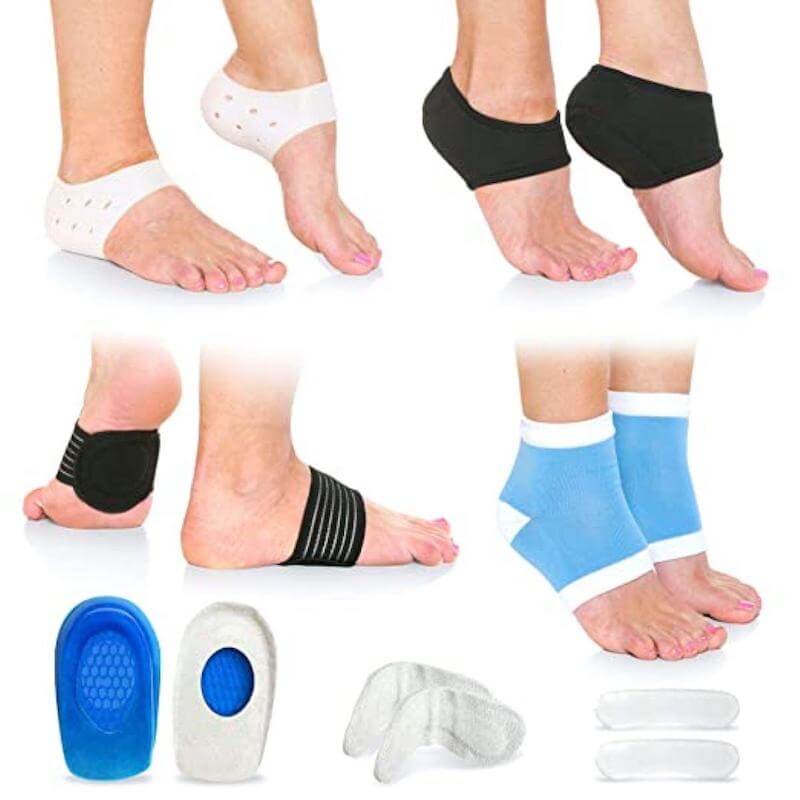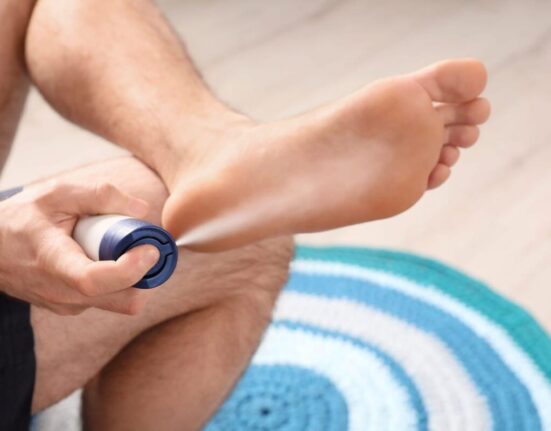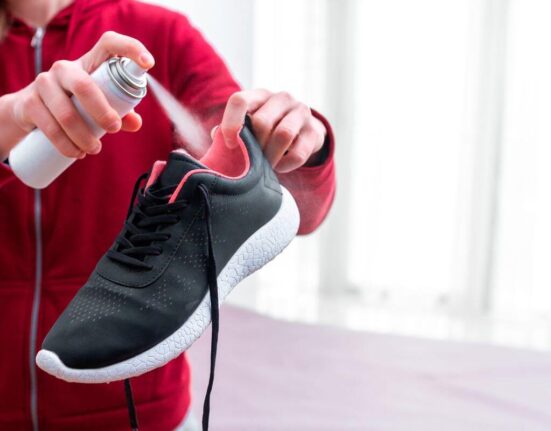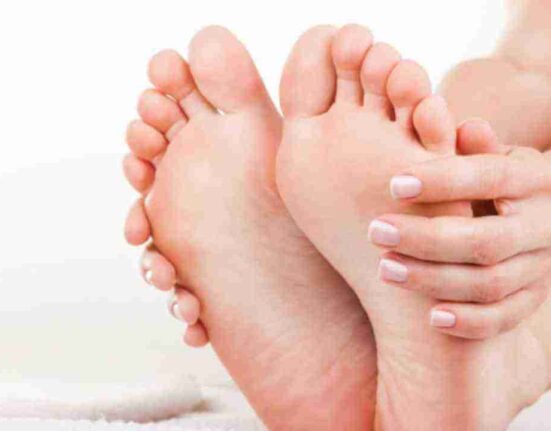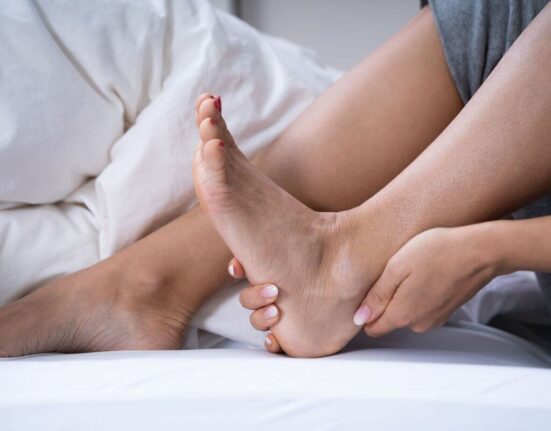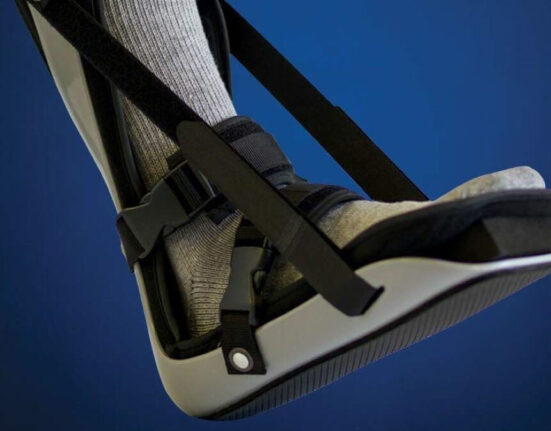Hey there, plantar fasciitis sufferers! Are you tired of hobbling around in pain every time you take a step? Have you tried countless remedies and therapies with no success?
Fear not, because we have the ultimate solution to cure your plantar fasciitis in just one week! Say goodbye to those excruciating foot pains and hello to a pain-free life with the help of essential oils, stretching, and some strategic garments. Don’t believe us? Keep reading to find out how you can kick plantar fasciitis to the curb for good!
Plantar fasciitis is a painful condition that affects the heel and arch of your foot. If you’re suffering from plantar fasciitis, you know how debilitating it can be.
Even simple tasks like walking can be incredibly painful. The good news is that there are a few simple steps you can take to cure plantar fasciitis in one week.
Simple Lifestyle Change #1: Essential Oils
What essential oils can help heal the pain of plantar fasciitis?
Plantar fasciitis is a common condition that causes heel pain. It occurs when the plantar fascia, a band of tissue that spans the bottom of your foot from your heel to your toes, becomes swollen and irritated.
Rest would be ideal, but most of us do not have the option to stay off our feet for a few days. There are things you can do to reduce the pain and inflammation and give the foot more support.
Essential oils can be an effective and natural option to help reduce inflammation.

5 essential oils that have been known to help reduce inflammation and pain are:
1. Peppermint Oil

Peppermint oil has a cooling effect that can help to soothe sore muscles and joints. Its anti-inflammatory properties may help to reduce swelling and inflammation associated with plantar fasciitis.
2. Eucalyptus Oil
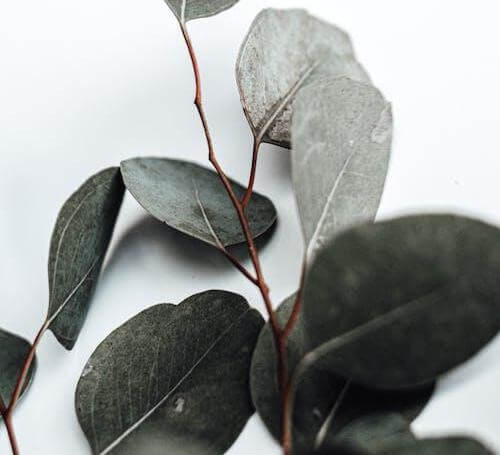
Eucalyptus is known for its anti-inflammatory properties and may help to reduce pain and inflammation associated with plantar fasciitis.
3. Frankincense Oil

Frankincense oil is believed to have anti-inflammatory and pain-relieving properties that can help to alleviate the symptoms of plantar fasciitis.
4. Lavender Oil
Lavender is known for its soothing and calming properties that may help to ease pain and inflammation associated with plantar fasciitis.
5. Ginger Oil

Ginger oil has been found to have anti-inflammatory properties that may help to reduce pain and swelling associated with plantar fasciitis.
Before using any essential oil, it’s important to dilute it with a carrier oil and test it on a small patch of skin to check for any allergic reactions.
We prefer the fragrance of organic lavender. A good-quality organic lavender oil is pure with nothing added to it, no other oils or stabilizers.
Cliganic USDA Organic Lavender Essential Oil – 100% Pure Natural Undiluted
4 ways to use essential oil to help treat plantar fasciitis
Here are some ways to use essential oils to help treat plantar fasciitis:
1. Massage
Dilute a few drops of your chosen essential oil with a carrier oil, such as coconut or jojoba oil, and massage the mixture into your feet, focusing on the heel and arch areas. This can help to increase circulation, reduce inflammation, and relieve pain.
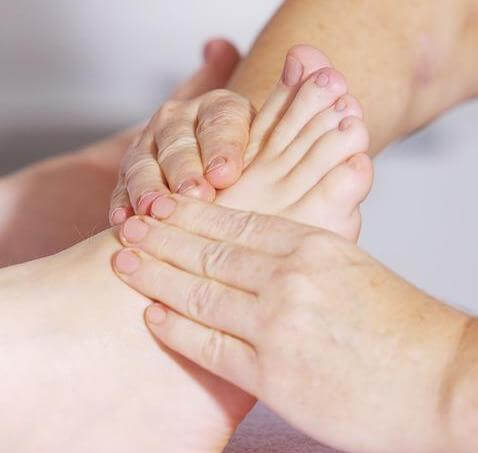
2. Soak
Add a few drops of your chosen essential oil to a basin of warm water and soak your feet for 10-15 minutes. This can help to soothe sore muscles and reduce inflammation.
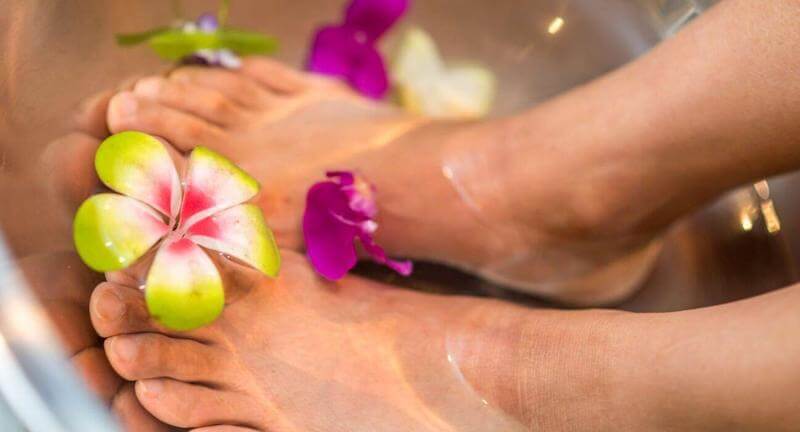
3.Compress
Add a few drops of your chosen essential oil to a hot or cold compress, then apply the compress to the affected area for 10-15 minutes. This can help to reduce swelling and relieve pain.
4. Diffuse
Add a few drops of your chosen essential oil to a diffuser and allow the aroma to fill your room. This can help to promote relaxation and reduce stress, which can exacerbate symptoms of plantar fasciitis.
Remember to always dilute essential oils before use and consult with an integrative healthcare professional if you have any concerns or medical conditions.
Simple Lifestyle Change #2 Perform stretches to help heal plantar fasciitis
In addition to resting. even just a little, and icing, you’ll also need to stretch your calves, Achilles tendon, and plantar fascia. Stretching pulls on the fascia and helps break up the scar tissue that has formed.
For calf stretches, stand with your hands against a wall and your feet about hip-width apart. Step back with one leg until you feel a stretch in the calf of your front leg. Hold for 30 seconds and then repeat with the other leg.

For Achilles tendon stretches, stand with your feet together and place your hands against a wall. Lean forward while keeping your heels on the ground until you feel a stretch in your Achilles tendon. Hold for 30 seconds and repeat 3 times.
For plantar fascia stretches, sit on the ground with your legs extended in front of you. Wrap a towel around the ball of one foot and pull your toes back toward your shin until the bottom of your foot stretches. Hold for 30 seconds and repeat with the other foot.
Massage and stretch the affected area with a tennis or lacrosse ball to release any tightness in the muscles or connective tissue. Roll the ball under your foot for two minutes, three times per day.
AskDoctorJo demonstrates how to stretch the foot properly to bring relief and healing.
Simple Lifestyle Change #3 – Wear shoes and compression socks, and supports that support plantar fasciitis healing
Wear supportive shoes with good arch support throughout the day and avoid wearing high heels or going barefoot whenever possible.
An example of a shoe with good support are:
OrthoComfoot Women Slip On Shoes, Plantar Fasciitis Canvas Loafers
Also, you may choose to wear supportive planar fasciitis designed socks to give more support around the ankle and arch like these. There are thousands of positive reviews and they give almost instant relief while they help heal:
Plantar Fasciitis Sock (6 Pairs) for Men and Women
You may also want to try using an orthotic insert inside your shoes if plantar fasciitis persists despite these measures. With some simple self-care measures, you can banish plantar fasciitis pain for good!
This plantar fasciitis kit gives you all of the tools like insoles and compression items you will need to achieve a full recovery.
Plantar Fasciitis Foot Pain Relief 14-Piece Kit
There are many frequently asked questions about plantar fasciitis. Here are the answers to the top five most frequently asked questions concerning plantar fasciitis:
1. What causes plantar fasciitis to flare up?
In many cases, plantar fasciitis is caused by overuse or repetitive stress on the foot, such as from running or standing for long periods of time.

Other factors that can contribute to plantar fasciitis include shoes that do not provide adequate support, tight calf muscles, and flat feet. Plantar fasciitis usually goes away on its own with rest, stress relief, ice, and proper supportive shoes, socks, and orthotics.
2. Are crocs good for plantar fasciitis?
There is some limited evidence that crocs can be helpful for plantar fasciitis. The key seems to be making sure the crocs have a good amount of arch support. If they don’t, they might actually make the condition worse.
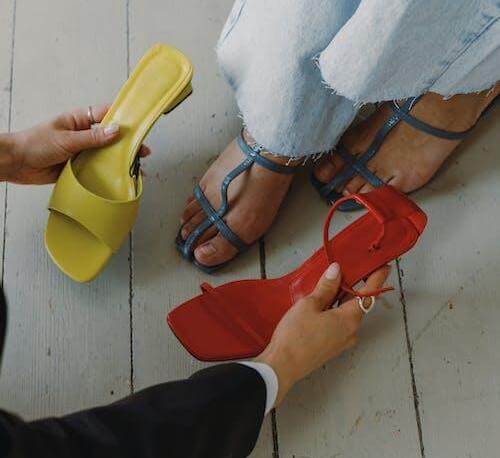
If you’re considering using crocs to treat plantar fasciitis, it’s best to talk to your doctor or podiatrist to make sure you’re using the right type of shoe and that they provide enough arch support.
3. Can plantar fasciitis cause knee pain?
Yes, plantar fasciitis can cause knee pain. Plantar fasciitis often causes stabbing pain in the heel, but it can also cause pain in other parts of your foot, including your toes, ankles, and knees.
Knee pain is a common complaint among people who have plantar fasciitis. Stretching properly each day can help.

4. Can plantar fasciitis cause ankle pain?
It’s possible that plantar fasciitis could cause ankle pain if the inflammation from the plantar fasciitis is traveling up the leg and affecting other areas.

However, it’s also possible that there are other causes of ankle pain, such as arthritis, and it would be best to see a doctor to determine the cause.
5. How to prevent plantar fasciitis?
There are a few things that you can do to help prevent plantar fasciitis.

One is to make sure that you wear shoes that fit well and provide good support. You should also stretch your feet and calves regularly, and try to include some foot exercises in your routine.
Additionally, be careful when you first start exercising again after a long break—take it easy at first and gradually increase the intensity and duration of your workouts.
Concluding thoughts on how to cure plantar fasciitis in one week
Plantar fasciitis is a common condition that causes heel pain and arch pain. Thankfully, there are a few simple steps you can take to cure plantar fasciitis in one week!
All of the following factors come into consideration when treating the condition in a week:
- rest
- ice
- stretch
- massage
- wear supportive shoes, socks, and insoles
- avoid high heels or going barefoot whenever possible.
With some simple self-care measures, you can get rid of plantar fasciitis pain for good in record time.
We hope your feet feel better soon!
More from thewellthieone.com
The links used on thewellthieone.com are affiliate links, which may provide a small commission. This does not increase the price of the goods for the consumer whatsoever. What it does is ensure that useful content like this can continue to be produced. Thank-you for enjoying our content and allowing us to continue to provide more.

